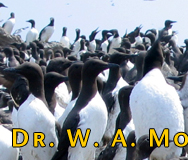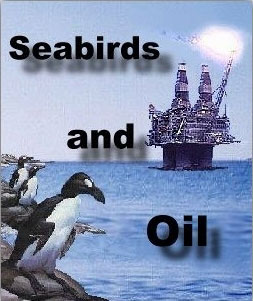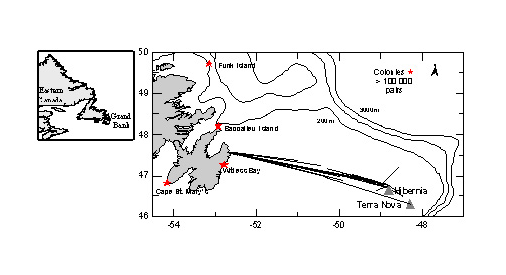


The Grand Bank of eastern Canada supports more than 40 million seabirds on an annual basis. Millions of locally breeding seabirds and globally significant populations of long-distance migrants from the Canadian Arctic, Greenland, Northern Europe and the Southern Hemisphere exploit the Grand Bank. Despite this richness of avian fauna, there are knowledge gaps related to the year round distribution and abundance of seabirds in the region. This is a major concern in light of increasing offshore oil development and the potential negative effects associated with these activities, including episodic mortality due to oiling, flaring and collisions with structures. The recent spill of 170,000 liters of crude oil from the Terra Nova FPSO in November 2004 highlighted the need for more scientific research to help ensure seabird protection. During 1999-2003, we conducted surveys to offshore oil platforms to generate independent, scientifically rigorous indices of seabird occurrences near and at offshore platforms and to document mortality associated with hydrocarbon production. There are critical periods during migration when seabirds are at great risk from mortality associated with collisions, flaring and oil pollution. These surveys documented that seabirds aggregate at offshore platforms where oiled birds have been documented. We have emphasized that scientifically rigorous monitoring programs on platform by independent observers are needed to document this episodic mortality and for scientific transparency and integrity. Owing to economic climate and power bases, we have met great resistance from industry in attempting to implement rigorous scientific programs for marine birds and mammals.

Transects to and from offshore platforms on the Grand Bank.
Footage of gulls roosting on Hibernia platform, September 2003. Click the image above to play the video (.mpg)
Footage of oiled Common Murre at Hibernia platform, February 2003. Click the image above to play the video (.mpg)
